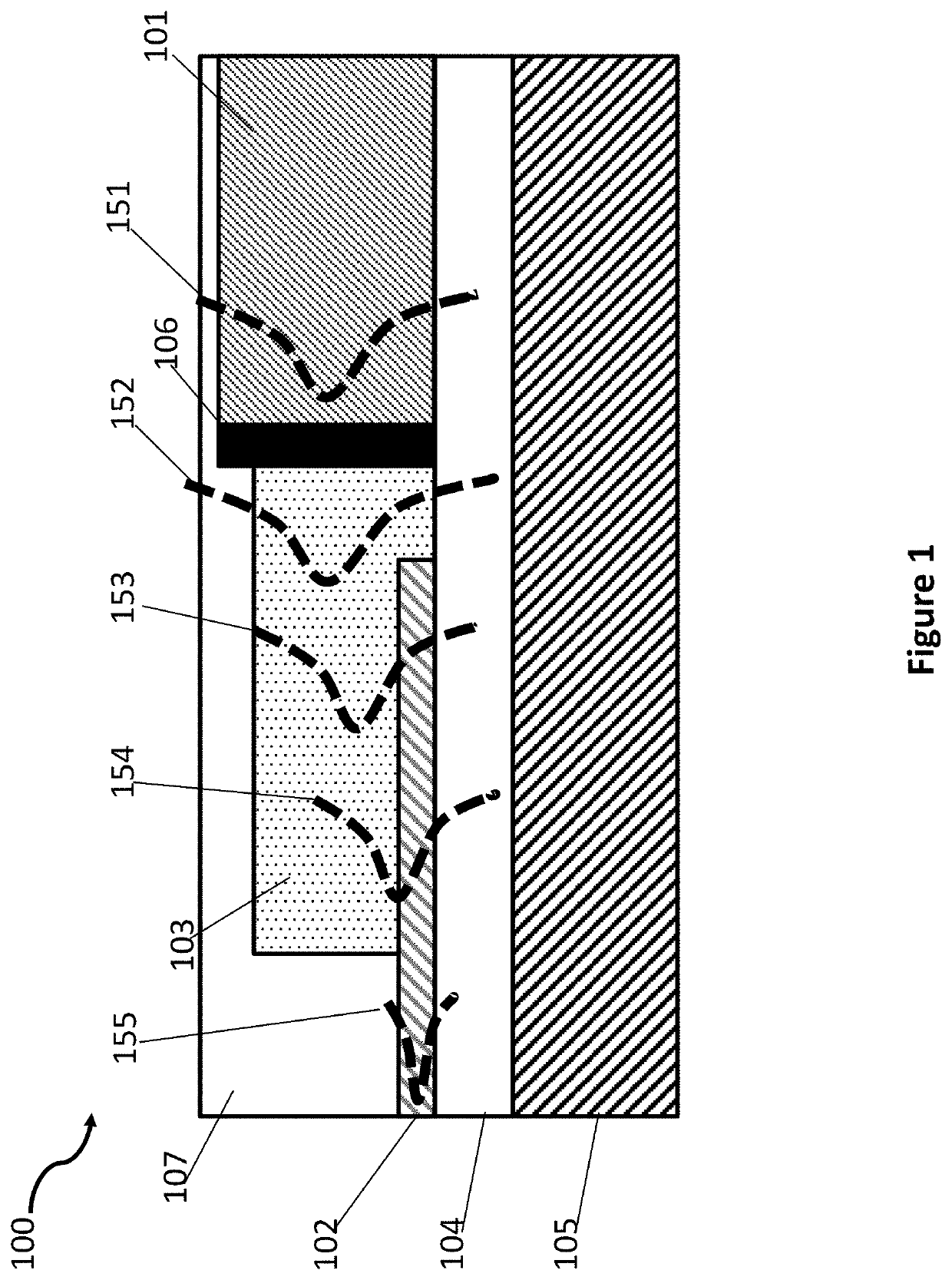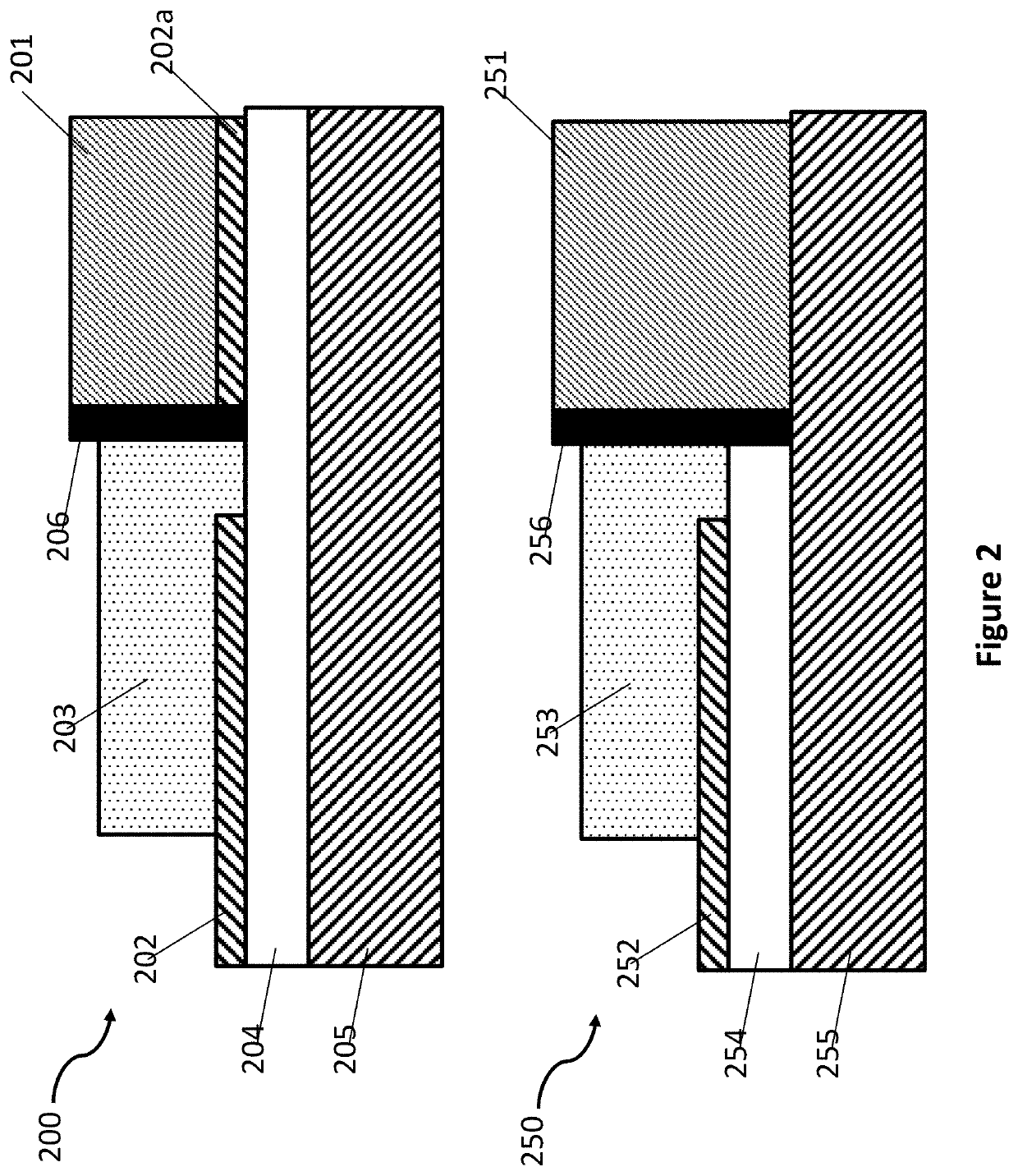Integrated active devices with improved optical coupling to dielectric waveguides
a dielectric waveguide and active device technology, applied in the field of semiconductor processing, can solve the problems of increasing packaging costs, difficult to provide electrically pumped sources, and introducing scaling limitations, and achieve the effect of facilitating efficient adiabatic transformation
- Summary
- Abstract
- Description
- Claims
- Application Information
AI Technical Summary
Benefits of technology
Problems solved by technology
Method used
Image
Examples
Embodiment Construction
[0019]Described herein include embodiments of a method and system for realization of photonic integrated circuits using wafer bonding and deposition of dissimilar materials where optical coupling is improved by use of mode conversion and a butt-coupling scheme.
[0020]In the following detailed description, reference is made to the accompanying drawings which form a part hereof, wherein like numerals designate like parts throughout, and in which are shown by way of illustration embodiments in which the subject matter of the present disclosure may be practiced. It is to be understood that other embodiments may be utilized and structural or logical changes may be made without departing from the scope of the present disclosure. Therefore, the following detailed description is not to be taken in a limiting sense, and the scope of embodiments is defined by the appended claims and their equivalents.
[0021]The description may use perspective-based descriptions such as top / bottom, in / out, over / ...
PUM
| Property | Measurement | Unit |
|---|---|---|
| refractive indices | aaaaa | aaaaa |
| refractive index | aaaaa | aaaaa |
| evanescent field | aaaaa | aaaaa |
Abstract
Description
Claims
Application Information
 Login to View More
Login to View More - R&D
- Intellectual Property
- Life Sciences
- Materials
- Tech Scout
- Unparalleled Data Quality
- Higher Quality Content
- 60% Fewer Hallucinations
Browse by: Latest US Patents, China's latest patents, Technical Efficacy Thesaurus, Application Domain, Technology Topic, Popular Technical Reports.
© 2025 PatSnap. All rights reserved.Legal|Privacy policy|Modern Slavery Act Transparency Statement|Sitemap|About US| Contact US: help@patsnap.com



